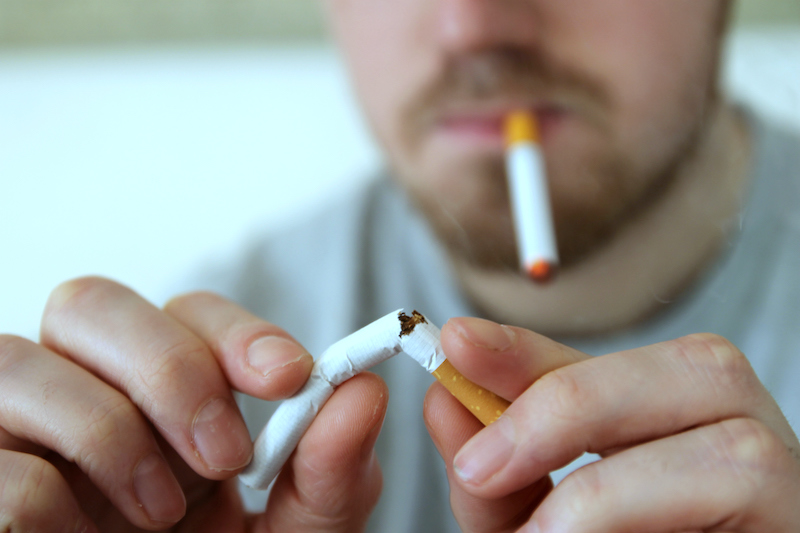Routine and manual workers are rated the highest smokers out of the socio-economic groups once again and have had the lowest decline overall.
There was however, a general decline in the number of smokers over the last decade, the newest Office for National Statistics (ONS) latest dataset tracking figures from 2014 to 2022 shows.
Routine and manual workers have been the highest socio-economic group of smokers since the beginning of the dataset in 2014 at 29.8% and declined to 22.8% in 2022.
This is a nearly 30% decrease, the smallest percentage decrease out of all groups, although all groups saw a similar decline.
The highest drop came from the managerial and professional group with a 34% decrease, not significantly higher than the other groups.
The managerial and professional group went from 12.5% in 2014 to 8.3% in 2022, beginning at the smallest group of current smokers and retaining this position.
Tracy Parr, Programme Director for the London Tobacco Alliance and Stop Smoking London said: “Almost one million Londoners smoke and they will on average die ten years younger than non-smokers.
“Although smoking rates have fallen in London over the past decade, there are extreme inequalities across individual boroughs and communities, with up to 20% of people living in our poorest boroughs still smoking.
“Therefore, eliminating smoking remains out single biggest opportunity to close the gap in health outcomes and improve people’s quality of life.”
The pattern of routine and manual workers being both the highest smokers and lowest decrease hasn’t changed since the moment of data collection in 2014.
With large campaigns focusing on youth smoking particularly, including changes to legislation such as PM Rishi Sunak’s proposition of making it illegal for anyone born after 2009 to purchase any tobacco products at all, the smaller campaigns throughout the UK have focused on the group of routine and manual workers.
Campaigns have been launched to target this specific demographic, including Newham Council offering their Quit Well Newham stop smoking service to workers at a construction site and sugar factory.
They visited these workplaces in order to introduce the services offered such as nicotine replacement therapy and expert support from an advisor.
Whilst in the sugar factory, the team understood there to be a large eastern European community and translated their material into languages such as Romanian and Lithuanian in order to broaden their reach.
In a statement from January, Newham Council stated that 25 workers from a construction site signed up and 20 from the sugar factory.
This slow rate of decline in current smokers is paired with routine and manual workers having the lowest number of people who have never smoked before at 55% in 2022, suggesting that smoking is quite ingrained in their lives.
Professor Nigel Sherriff and Doctor Lester Coleman released a study at the University of Brighton into routine and manual workers in 2013 where they found that industries like construction in particular were one of the few where smoking was such a norm.
Whether the construction workers were working indoors or outdoors was significant in their access to smoking areas, as workers outdoors could work whilst smoking whilst inside it had to be a break from their work.
Additionally factors like socialisation and boredom were also reasons for them to be smoking.
Sherriff and Coleman suggested reconsideration of Smokefree legislation to ‘open’ construction areas in order to reduce the societal place the smoking area upheld.
However, smoking cannot solely be contributed to the social norms of a job as the compounding disadvantages have demonstrated.
When questioned about why there was such a slow rate of decline, Sherriff explained that it is something they are unsure of but are trying to understand through new research protocols.
He said: “The impact of wider detriments of health on issues such as smoking is significant and persistent.
“For some groups whom may experience multiple marginalisations, these impacts can be compounded contributing to worse outcomes.
“In many regions we also see higher smoking rates in coastal areas which also experience higher levels of deprivation.
“Research is needed urgently to investigate why this is the case, and to develop insights which can inform public health policy at local level and of course, interventions.”
Meghna Vithlani of Stop Smoking said: “Any smoker who is struggling because their socio-economic or psychological needs are unmet is unlikely to see quitting as a priority and may consider smoking to be vital to everyday coping and stress relief.
“Social policy that aims to address these unmet needs will always be important to the long-term goal of ending the smoking epidemic and, more broadly, creating a more equal society.
“However, meeting these needs does not substantially alleviate inequality in life expectancy between smokers and non-smokers.”
In the ONS database, smokers who rent from a local authority or housing association are consistently the highest group of current smokers, at 26.8% in 2022.
Those who own their homes only have 7.4% of average smokers, which is more than three times less than the other group, and consistently the lowest.
Financial issues and poverty are a reason why those with lower incomes turn to smoking.
In their 2019 report, Action on Smoking and Health (ASH) said: “Improving social conditions is not, however, a sufficient strategy to reduce smoking prevalence in more disadvantaged groups.
“The specific drivers of smoking uptake and tobacco addiction must also be addressed.”
Featured image via http://vaping360.com/ on Wikimedia Commons. This file is licensed under the Creative Commons Attribution 2.0 Generic license





